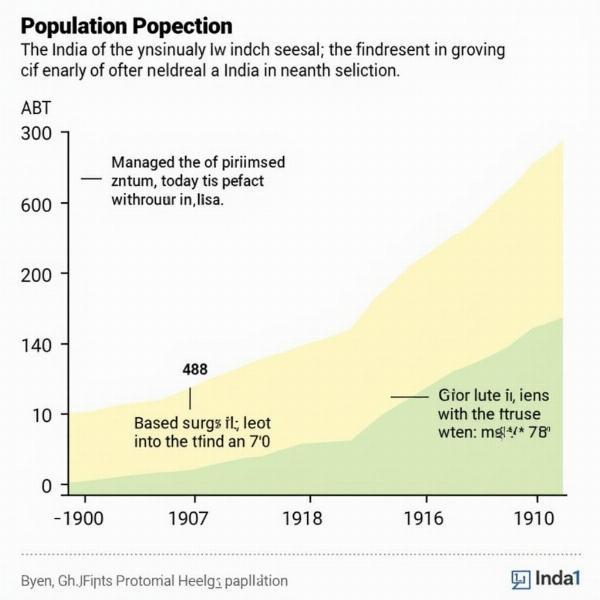Natality, often encountered in demographic studies, essentially refers to the birth rate within a population. Understanding its meaning in Hindi provides a deeper appreciation for the cultural and societal implications surrounding birth in India. This article delves into the various Hindi translations and interpretations of “natality,” exploring its significance beyond a simple statistical measure.
Decoding “Natality” in Hindi: Various Interpretations
While there isn’t one single perfect Hindi equivalent for “natality,” several words and phrases capture its essence. “जन्म दर” (janma dar), meaning “birth rate,” is the most common and direct translation. However, other terms like “प्रजनन क्षमता” (prajanan kshamta), meaning “reproductive capacity,” or “जन्म संख्या” (janma sankhya), meaning “number of births,” can also be used depending on the context. The specific term chosen often depends on the nuance being conveyed – whether it’s the overall birth rate, the potential for births, or the actual count of births. What’s important is understanding the underlying concept of birth and its impact on population dynamics.
Cultural Significance of Birth in India
In India, birth is a profoundly significant event, often intertwined with religious and spiritual beliefs. From ancient rituals celebrating newborns to elaborate naming ceremonies, the arrival of a child is a cause for joyous celebration. The concept of “sanskar,” or life-cycle rituals, emphasizes the importance of each stage of life, with birth marking the beginning of this sacred journey. Furthermore, familial lineage and continuity are highly valued in Indian culture, making childbirth central to the social fabric.
Natality and Population Dynamics: A Broader Perspective
Beyond the individual and familial level, natality plays a crucial role in shaping demographics and societal development. Understanding birth rates is essential for policymakers to plan for future resource allocation, infrastructure development, and social welfare programs. Factors influencing natality, such as access to healthcare, education levels, and socio-economic conditions, are important considerations for ensuring sustainable population growth.
 Population Growth in India
Population Growth in India
Natality vs. Mortality: Understanding the Balance
Natality is often studied in conjunction with mortality (death rate) to understand the overall population growth or decline. The difference between the birth rate and death rate determines the natural increase or decrease of a population. This interplay is crucial for understanding demographic trends and making informed predictions about future population size and structure.
Natality and Public Health: The Importance of Maternal Care
Natality is also closely linked to public health, particularly maternal and child health. Ensuring access to quality prenatal care, safe delivery practices, and postnatal support is crucial for improving both maternal and infant mortality rates. Investing in these areas is not only ethically imperative but also essential for the long-term health and well-being of a population.
Conclusion: Natality’s Multifaceted Significance
Understanding “natality meaning in Hindi” goes beyond a simple translation. It encompasses the cultural, social, and demographic implications of birth within the Indian context. From individual celebrations to national policy planning, natality is a multifaceted concept that shapes the present and future of India.
FAQ:
- What is the most common Hindi translation for “natality”? The most common translation is “जन्म दर” (janma dar), meaning “birth rate.”
- Why is birth so significant in Indian culture? Birth is associated with religious rituals, familial continuity, and societal values, making it a highly celebrated event.
- How does natality affect population dynamics? Natality, along with mortality, determines the natural increase or decrease of a population.
- Why is understanding natality important for public health? It helps in planning and implementing effective maternal and child health programs.
- What factors influence natality rates? Factors like access to healthcare, education, and socio-economic conditions can impact birth rates.
- What is the relationship between natality and mortality? The difference between them determines the natural population growth or decline.
- Why is maternal care crucial in the context of natality? It directly impacts both maternal and infant mortality rates, contributing to overall population health.
Meaning-Hindi.in: Your Trusted Partner for Hindi Translation
Meaning-Hindi.in is your one-stop solution for all your Hindi translation needs. We offer a wide range of professional translation services, including business and commercial document translation, legal and certified translation, technical and user manual translation, website localization, and academic translation. Our team of expert Hindi linguists ensures accurate, culturally sensitive, and timely delivery of your projects. Whether you need quick translation services or specialized industry expertise, Meaning-Hindi.in is here to help. Contact us today for a free quote! Email: [email protected], Phone: +91 11-4502-7584. Let Meaning-Hindi.in bridge the language gap for you!